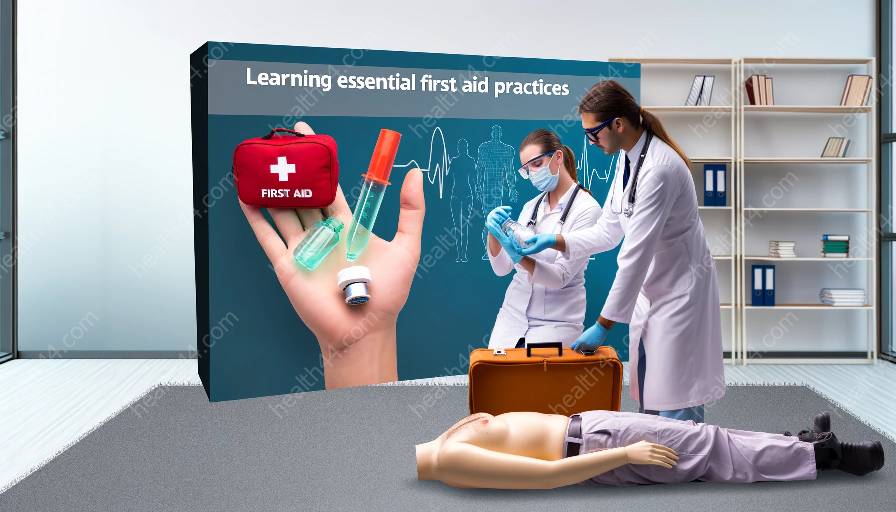Head and spinal injuries can have serious consequences. Knowing how to recognize and respond to these injuries is crucial for providing first aid and ensuring the best possible outcomes. In this topic cluster, we will explore the signs and symptoms of head and spinal injuries, first aid procedures, and relevant information for health education and medical training.
Recognizing Head and Spinal Injuries
Head and spinal injuries can result from various incidents, such as sports-related accidents, falls, and motor vehicle collisions. It's essential to be able to recognize the signs and symptoms of these injuries to provide timely and appropriate assistance.
Signs of Head Injuries
- Loss of consciousness: Unconsciousness, even if brief, can indicate a head injury.
- Confusion or disorientation: A person may appear dazed or have difficulty focusing and responding appropriately.
- Headache or pressure in the head: Persistent or severe headaches following an accident may be a sign of a head injury.
- Nausea or vomiting: These symptoms can accompany head injuries, especially if there is an impact to the head.
- Unequal pupil size: A visible difference in the size of the pupils can indicate a serious head injury.
Signs of Spinal Injuries
- Severe pain or pressure in the neck, head, or back: Any pain or pressure following an accident should be taken seriously and assessed for potential spinal injury.
- Weakness or tingling in the extremities: Numbness, tingling, or weakness in the arms, legs, or fingers can indicate damage to the spinal cord.
- Loss of movement or coordination: Difficulty moving or walking after an incident may signal a spinal injury.
First Aid for Head and Spinal Injuries
Providing appropriate first aid for head and spinal injuries can significantly impact the person's recovery and overall well-being. It's important to remember that moving the person with these injuries can worsen the damage, so immobilization is crucial.
Head Injury First Aid
If you suspect someone has sustained a head injury, follow these steps:
- Assess the situation: Check for any hazards and ensure the area is safe for you and the injured person.
- Call for emergency assistance: If the person is unconscious, has difficulty breathing, or shows severe symptoms, call for medical help immediately.
- Keep the person still: Encourage the injured person to remain still and wait for medical professionals to arrive.
- Monitor breathing: If the person is unconscious, check their breathing and be prepared to administer CPR if necessary.
- Apply ice or cold pack: If there is swelling or a visible head injury, apply a cold pack while waiting for medical help to arrive.
Spinal Injury First Aid
When dealing with a potential spinal injury, it's crucial to take the following steps:
- Assess the situation: Look for any hazards and ensure the area is safe for you and the injured person.
- Call for emergency assistance: If the person is showing signs of a potential spinal injury, do not move them and call for medical help immediately.
- Immobilize the person: Keep the person as still as possible by supporting their head and neck in a neutral position until medical help arrives.
- Monitor breathing: If the person is having difficulty breathing, be prepared to administer CPR if necessary.
Health Education and Medical Training
Health education and medical training play a vital role in equipping individuals with the knowledge and skills to respond effectively to head and spinal injuries. Courses and workshops focusing on first aid and emergency response can provide participants with the confidence and ability to act swiftly and appropriately in these critical situations.
Online Resources
Many reputable organizations offer online resources, videos, and courses dedicated to first aid training for head and spinal injuries. These resources cover topics such as injury recognition, emergency response, and proper immobilization techniques.
In-Person Training
Attending in-person training sessions led by certified instructors can provide hands-on experience and practical skills for managing head and spinal injuries. These sessions often include scenario-based training to simulate real-life emergency situations.
Continued Learning
Regularly refreshing and updating first aid and medical training knowledge is essential. As techniques and practices evolve, staying informed about the latest protocols and guidelines ensures readiness in emergency situations.
Conclusion
Head and spinal injuries require swift and appropriate responses to minimize potential complications. Recognizing the signs and symptoms, providing effective first aid, and staying informed through health education and medical training are crucial for promoting positive outcomes in these critical scenarios.



